TL;DR
Put the TV in the nook and keep the fireplace for art or a mirror. Build a media wall with base cabinets, integrated wire management, and shelves to soften the boxy opening. Avoid hanging a TV over a tall mantel - it's uncomfortable to watch, can risk heat exposure, and rarely looks right. If you don't want media there, turn the nook into custom storage or a dry bar with doors.
Introduction
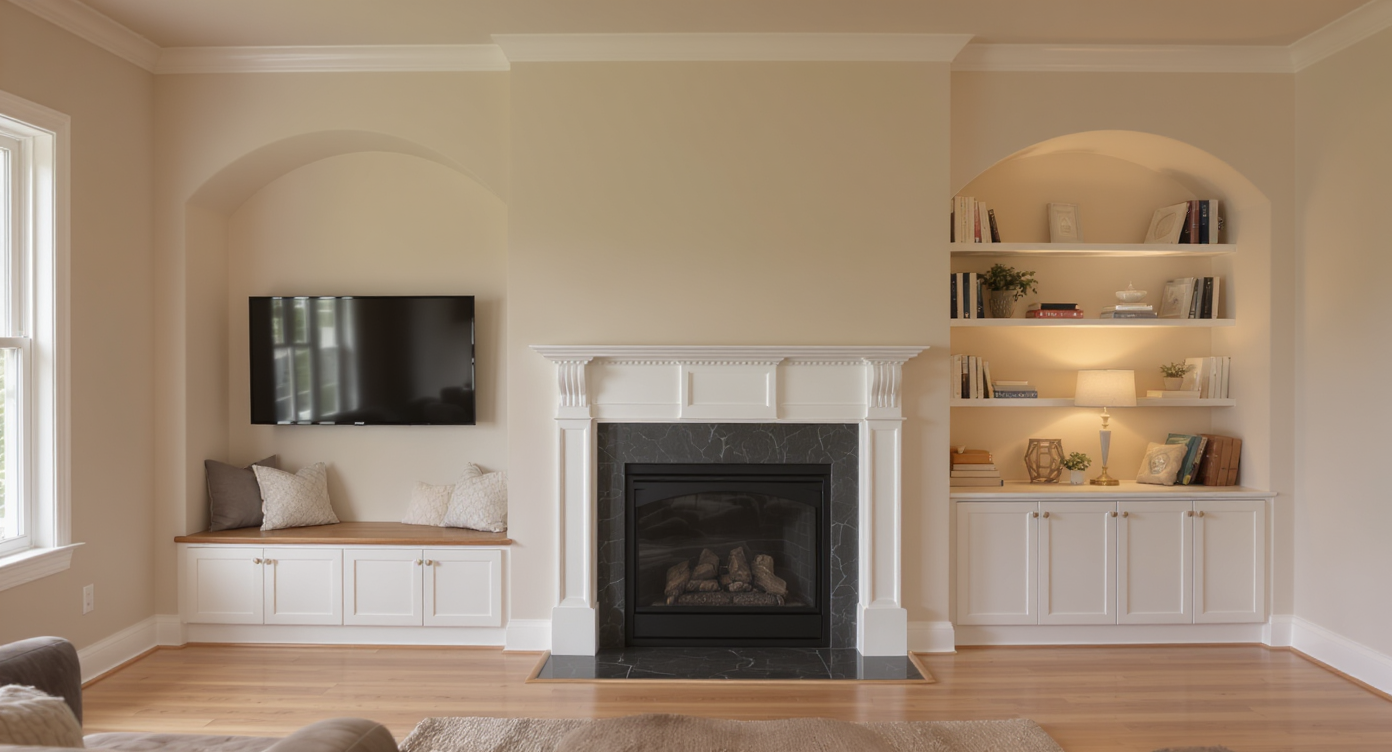
Exploring options for a shallow, wide nook: TV, shelves, or a cozy reading bench.
Shallow but wide nooks are classic head-scratchers. They promise storage and symmetry, yet they stall us when it comes to real-world use. Do you tuck the TV in there? Create a cozy seat? Build a bar?
I hear this dilemma often, especially when a fireplace sits nearby. One homeowner told me their partner wanted the TV above the mantel because “what else goes there,” while they favored a reading bench and shelves in the alcove. Another couple said a quick digital mockup convinced them to put the TV in the nook and preserve the fireplace for art - and yes, one of them joked about happily “losing” that debate.
Here’s the thing: layout and comfort win. A great solution respects eye level, traffic flow, and glare, then layers in storage and style. Let’s make that nook work hard and look intentional.
Section 1 - Core Strategy and Direct Answer
Direct answer: Put the TV in the nook. Keep the fireplace for art, a mirror, or beautiful millwork. Treat the nook like a custom media wall with storage below, a clean panel for the TV, and shelves or doors that make the opening look designed - not leftover.
Why the TV belongs in the nook:
- Eye level matters. Over-mantel TVs are usually too high, especially with a tall mantle. Many people report neck strain just thinking about it. The center of the screen should land near seated eye height - roughly 40 to 44 inches to screen center for most sofas.
- Heat and soot are real. Fireplaces can push heat upward. Even with a mantel, electronics don’t love fluctuating temps. Keeping the TV off the fireplace extends lifespan.
- Clues in the construction. When you see outlets, coax, or Ethernet clustered inside a niche, that’s a hint it was built for media.
How to design the nook as a media wall:
- Step 1 - Measure and plan depth. If the niche is shallow, use slim base cabinets (15 to 18 inches deep) and a flat panel across the top half. Mount the TV on that panel so it sits flush and forward - not recessed deep into shadow.
- Step 2 - Add closed storage. Base cabinets hide components, game consoles, and visual clutter. Include a vented section for electronics and a drawer for remotes.
- Step 3 - Wire it cleanly. Install an outlet and conduit behind the TV. Do not run a power cord inside the wall. Use in-wall rated cables and a single grommet to a cabinet below.
- Step 4 - Manage glare. If a window faces the nook, layer window treatments. Light-filtering shades by day, opaque panels for movie time. A tilt or low-profile swivel mount helps, too.
- Step 5 - Soften the box. Flank the TV area with shelves or tall doors. LED tape under shelves adds a quiet glow and takes the focus off the “black box.”
Layout that works: Float the sofa to face the nook, keep 36 inches of walkway behind or around it, and let the fireplace sit proudly to the side. I’ve seen this exact setup feel balanced - cozy for everyday, practical for guests.
Anecdotes from real homes: One homeowner put an 84-inch TV in a similar alcove and never looked back. Another swore their neck hurt just thinking about a TV over the mantel. I’ve made that mistake in a past bungalow - even with a tilt mount, it felt like watching at a sports bar. The room looked expensive but didn’t live well.
Anecdote
A couple wrestled with the classic question: TV over the fireplace or in the alcove? A simple rendering of built-ins with a centered screen, base cabinets, and flanking shelves made the choice easy. They kept the fireplace for art and never missed the above-mantel TV. Another homeowner told me they installed an 84-inch screen in a similar niche and loved how it freed up the room’s layout while hiding every last wire. And years ago, I tried a TV above a soaring mantel in my own bungalow. It looked impressive, but we watched fewer movies because it just wasn’t comfortable.
Section 2 - Common Mistakes & Misconceptions
- Mounting the TV above a tall fireplace. It looks dramatic but often lands too high for comfort and risks heat exposure. Solution: keep the fireplace for art or a mirror and use the nook for media.
- Ignoring window glare. Daytime reflections make screens unwatchable. Solution: install layered treatments - light-filtering shades plus drapery, or a roman shade in a performance fabric. Consider a matte-screen TV and a slight tilt mount.
- Recessing the TV too far back. Deeply set screens look cave-like and reduce perceived size. Solution: bring the TV forward with a finished panel so the face of the screen is nearly flush with the niche front.
- Blocking traffic flow. Pushing the sofa against a wall may force passersby to cut through the viewing line. Solution: float seating, leave a 36-inch walkway, and use a smaller coffee table to keep paths clear.
- Cable chaos. Visible wires kill the look. Solution: in-wall conduit to the base cabinet, IR or RF remotes, labeled power strip, and a dedicated outlet behind the TV.
Section 3 - Pro Tips / Expert Insights
- Size smart, not just big. For 4K screens, a good rule is sitting distance at roughly 1 to 1.5 times the screen diagonal. If your sofa is 8 feet away, a 65 to 75 inch TV usually feels right.
- Match the fireplace millwork. If you already have built-ins flanking the fireplace, echo those profiles in the nook. Repeat door styles, paint color, and hardware for a tailored, original-to-the-home feel.
- Use a back panel. A finished panel behind the TV hides seams and provides a clean mounting surface. Paint it the wall color for quiet continuity or a darker tone to visually sink the TV.
- Hide audio, keep quality. A slim soundbar mounted just below the screen gives clarity without clutter. If you prefer bookshelves, integrate small left-right speakers behind speaker cloth grilles.
- Think convertible. Not a TV person? Turn the same base cabinets and panel into a dry bar by swapping the TV for art, adding a stemware rack, and tucking a narrow beverage fridge behind a panel door.
A designer’s-eye note: I once solved a persistent glare problem by mixing a linen roman shade with stationary side panels and switching to a matte-finish TV. The difference was immediate - no more squinting at Sunday games.
Section 4 - Tools, Inspiration, or Recommended Resources
- Blue tape planning. Outline TV size and cabinet depths on the wall and floor with painter’s tape. Live with it for a day to test scale and pathways.
- Mount calculators. Use a viewing height calculator to place the screen center near your seated eye level.
- Remote solutions. RF remotes or a small IR repeater let you keep components behind doors.
- Design visualization. Try concept renderings with ReimagineHome to compare a media wall vs. a bar or bookcase before you build.
Visualization Scenario
Picture this: base cabinets stretch wall to wall across the nook, painted the same soft white as your trim. A simple vertical panel rises from the countertop, color-matched to the wall. The TV floats on it, its bottom edge a touch above eye level. Slim shelves climb one side, washed with a line of warm LED light. The fireplace, now crowned with a framed landscape and a petite picture light, becomes a calm counterpoint. Your sofa faces the screen, with a clear 36-inch path around it. It’s tidy, balanced, and remarkably comfortable - the room finally makes sense.
FAQ
- How big can my TV be in a shallow nook? Choose a size that fits with at least a few inches of side clearance and aligns with viewing distance. For 7 to 9 feet away, 65 to 75 inches is common.
- What if glare from a nearby window hits the screen? Add light-filtering roller shades or roman shades for daytime and lined drapery for evenings. A tilt mount and matte-screen TV also help.
- Can I safely put a TV over the fireplace? Only if you can keep the bottom of the screen near seated eye level and confirm heat exposure is minimal. With tall mantels, that’s rarely achievable. Most rooms look and function better with the TV off the fireplace.
- How do I hide cables cleanly? Install an outlet behind the TV, run low-voltage cables through in-wall conduit to a base cabinet, and use RF remotes or an IR repeater so doors can stay closed.
- What if I don’t want a TV there at all? Convert the nook into a dry bar with paneled doors, a narrow beverage fridge, and glass shelves with lighting - or a closed cabinet wall with seasonal storage and space for art.
Conclusion
The simplest, most comfortable answer is usually the right one. Let the fireplace be beautiful. Let the nook do the heavy lifting. A well-planned media wall - with base cabinets, a clean panel, and thoughtful lighting - turns an awkward alcove into the heart of the room without sacrificing comfort or flow.
And if your household is split? You’re not alone. I’ve seen plenty of couples start on opposite sides and meet in the middle once they see the plan. The goal isn’t winning the debate. It’s a living room that lives well.
.svg)

.svg)

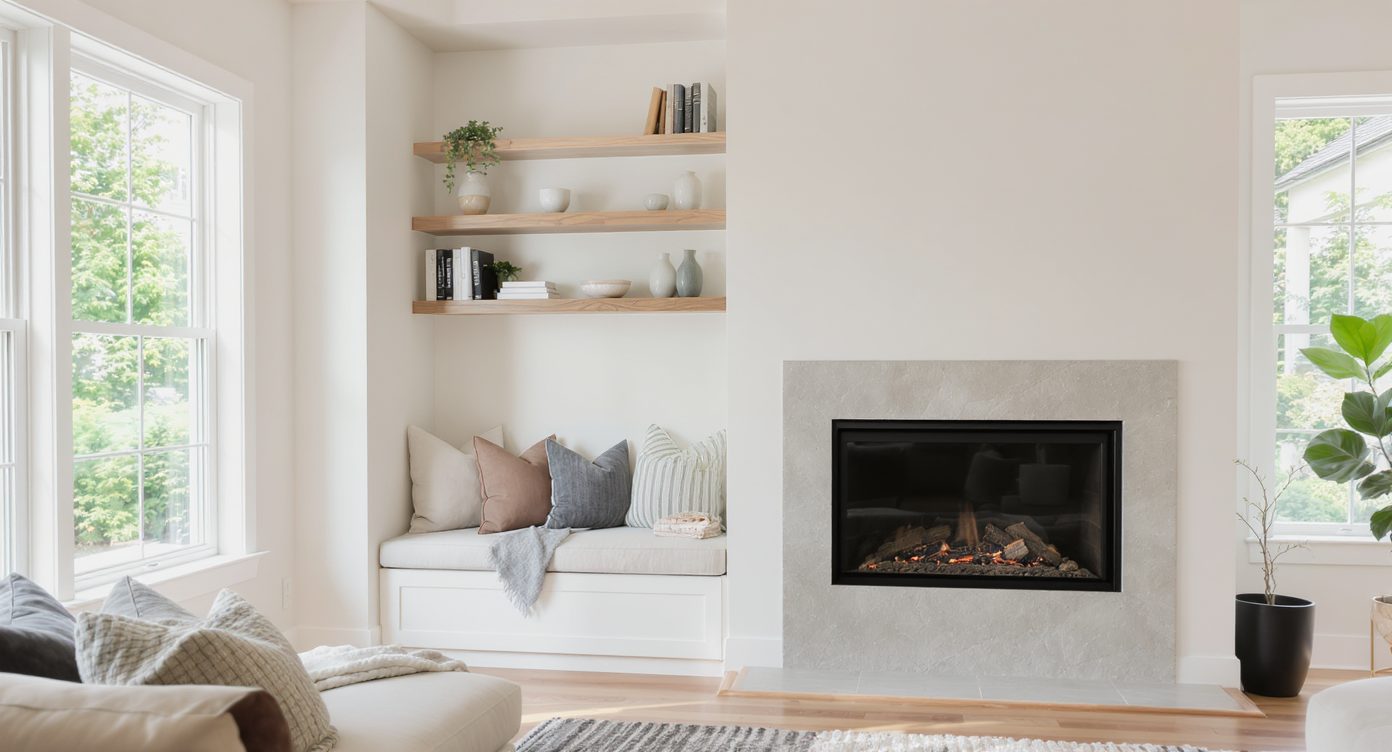
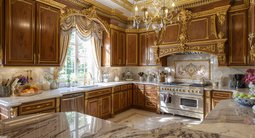
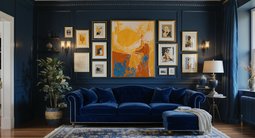

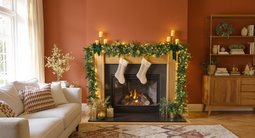
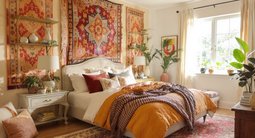
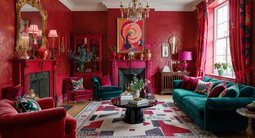


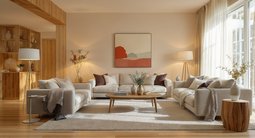
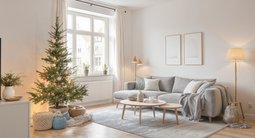


.png)